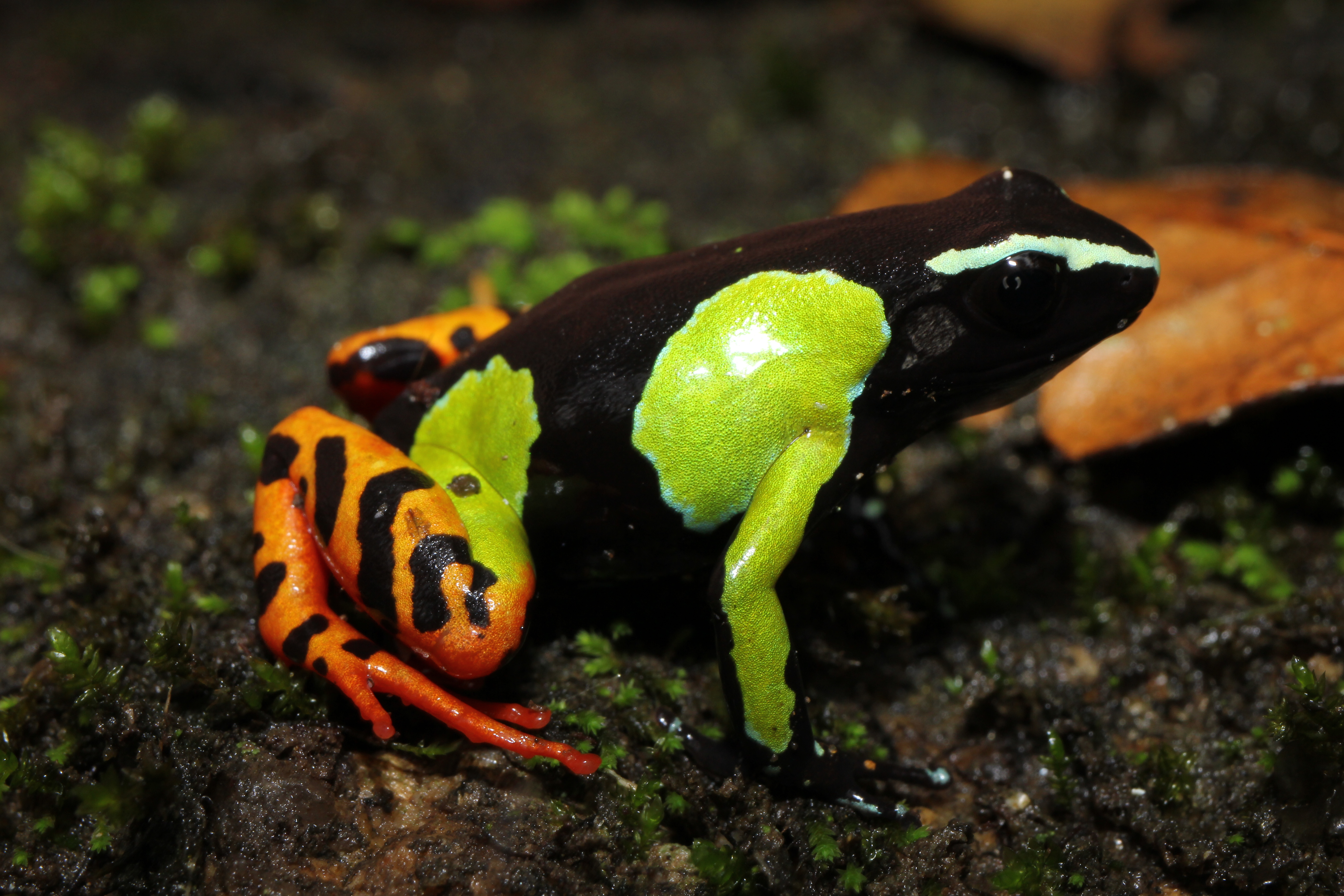Research
Linking Thermal Ecology and Biogeography for understanding Global Change
The ecological disciplines of spatial ecology, macroecology and biogeography have made considerable developments in recent decades, yet largely independent of the equally important fields of ecophysiology and biophysics. My research program seeks to unify these fields for a more integrative and nuanced understanding of how biodiversity, environments and societies respond to global change.
How will ecological systems and landscapes change in the face of the compounded threats of land use change and climate change?
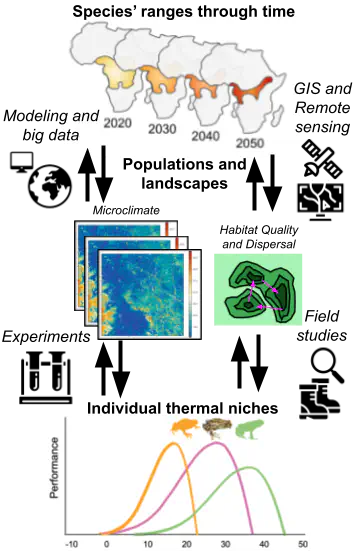
Microclimate from local to global scales
Most climate change research relies on weather stations placed in flat, open locations. Yet climate warming and variability impact humans, crops, and biodiversity locally through microclimates generated by vegetation, topography, buildings, and other features. Core to my research is defining ecologically-relevant microclimate, and exploring the importance of microclimates for ecology and conservation through observation and modeling.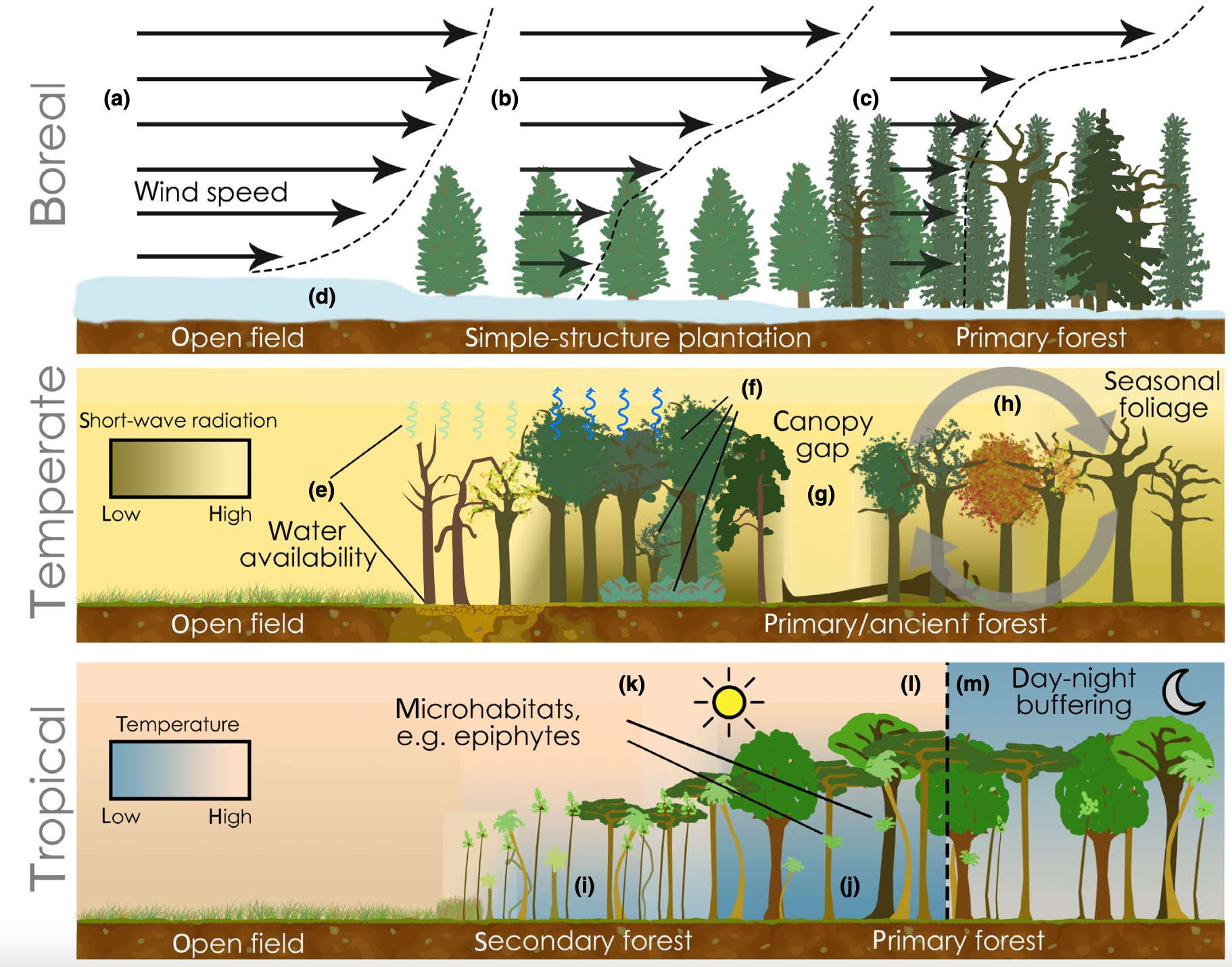
Relevant publications:
Klinges and Scheffers 2021 The American Naturalist
Klinges et al. 2022 Methods in Ecology and Evolution Klinges et al. 2024 Global Ecology and Biogeography
Trew et al. 2024 Nature Climate Change
De Frenne et al. 2021 Global Change Biology
Ecophysiology of Amphibian Communities
Animal physiology is a junction of an individual’s traits and behavior with its environment. I integrate experimentally-derived measurements of physiological responses to climate with tools and theory on landscape ecology. I focus upon the physiology of amphibians, which are functionally diverse, and also the most threatened vertebrate clade globally. Given that amphibians are ectothermic (i.e. no external source of heat, or ‘cold-blooded’) they are highly sensitive to their local climatic conditions. This makes them an ideal group of organisms for thermal ecology and microclimate studies.
Relevant publications:
Klinges, D.H. et al. Vertical and diel niches modulate thermal selection by rainforest frogs. In Press at Proceedings of the Royal Society of London B: Biological Sciences
Shifting Species’ Distributions
Climate change and habitat loss pose colossal challenges to biodiversity. One way a species can adapt to changing conditions is by migrating to track tolerable climates and habitats. Critical for conservation and restoration, therefore, is to identify if, where, and why species will move in response to global change. Yet our abilities to predict species’ shifting distributions remain lackluster. I attempt to improve our forecasts of species’ distributions, integrating big data on animal occurrences and remote sensing with mathematical models that represent biophysiology, demography, and dispersal.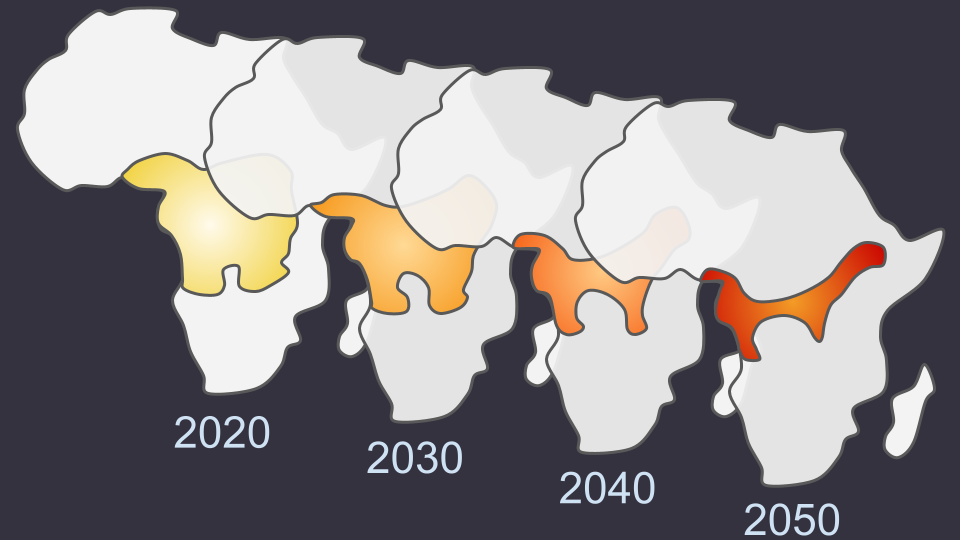
Relevant publications:
Klinges et al. 2024 Global Ecology and Biogeography
Baecher, Klinges, Evans, Fletcher, Romagosa, Scheffers In Review
Tropical Conservation and Capacity-Building
It is paramount to study biodiverse settings such as tropical ecosystems. Yet all too often Western researchers temporarily visit Majority World locations with good intentions, but extract data and insights without thorough engagement with local stakeholders. To combat such helicopter science, I seek to learn from my Malagasy collaborators to center their perspectives and goals, while recognizing my privileges and biases. Such partnerships have so far culminated in capacity-building workshops (e.g. leading data management and analysis for employees of Madagascar National Parks) and knowledge co-production through ecological research.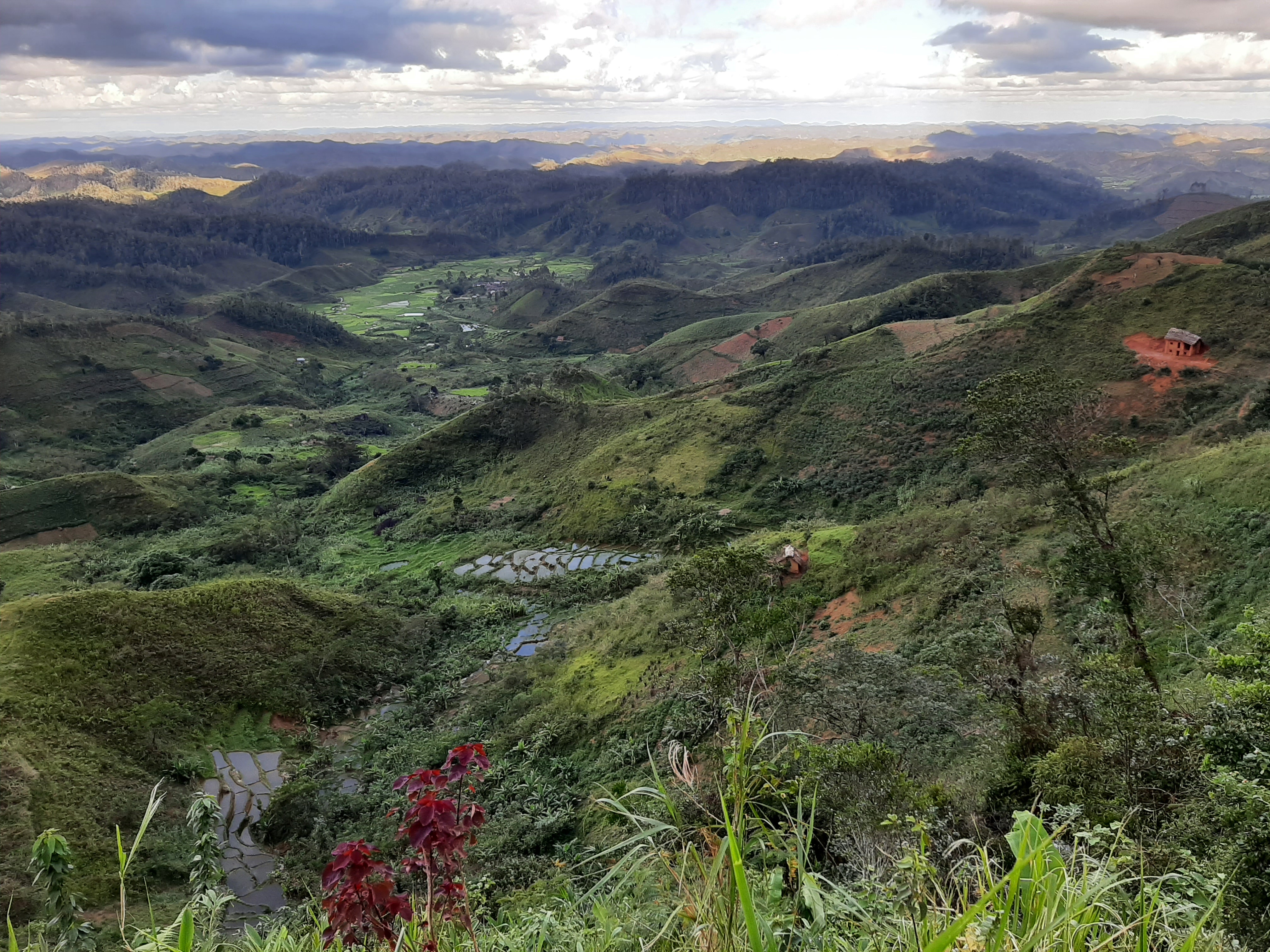
Relevant publications:
Price, Randriamiharisoa, Klinges 2023 Biological Conservation
Randriamiharisoa, Klinges, Scheffers In Revision
Klinges, Lembrechts, Van de Vondel, Greenlee, Hayles-Cotton, Senior In Prep; Pre-print available
Global Climate as Experienced by Life on Earth
Meteorological maps and models of global climate are derived from weather stations placed in flat, open locations, yet such stations do not measure the conditions that humans, crops, and biodiversity actually experience. I develop and apply microclimate modeling approaches to provide updated maps of global climate, for better understanding the variation in and rates of climate change for the planet.
Relevant publications:
Klinges et al. 2024 Global Ecology and Biogeography
Klinges, Maclean, Scheffers In Review (pre-print available)
Maclean and Klinges 2021 Ecological Modelling
Trew et al. 2024 Nature Climate Change
Lembrechts et al. 2022 Globbal Change Biology
Vertitude: Animal Biogeography from Forest Floor to Canopy
While the biodiversity of forests is generally recognized, scientists focus our attention on the ground, neglecting the immense biological richness of understories and canopies (~80% of tropical forest species found aboveground). I explore how the underappreciated biogeographic axis of vertitude – from forest floor to canopy – shapes the thermal niches, morphology, and dispersal abilities of animals.
Relevant publications:
Klinges and Scheffers 2021 The American Naturalist
Basham, Baecher, Klinges, Scheffers 2023 Biological Reviews
Klinges, D.H. et al. Vertical and diel niches modulate thermal selection by rainforest frogs. In Press at Proceedings of the Royal Society of London B: Biological Sciences
External Collaborations
Projects co-led with partners in research and conservation
Tropical Sustainability
Contributing to conservation and research in Madagascar and the Peruvian Amazon
Interactive Mapping
A front-end for accessing a global database of coastal carbon data
Ecological Forecasting
Near-term, iterative forecasting for conservation and management application.
SoilTemp
Ongoing research leveraging the SoilTemp global database of soil and near-surface temperatures
Scheffers Lab
Exploring global change ecology across scales and systems
Conservation Multimedia
Filmmaking and production for environmental non-profits
Networking Climate Data
Improving microclimate sensing through IoT sensors that wirelessly log and transfer information at a low cost
UAV Piloting
Drone applications for mapping of terrestrial and coastal systems
If research is the eyes of the scientific community, outreach is its voice: positive change requires proper communication and motivation.
One form of conveying the importance of conservation work is through film and photo. See the gallery for some of Nature Dave’s work developing multimedia products to share some of the amazing wildlife and scenes he’s experienced.
View Gallery